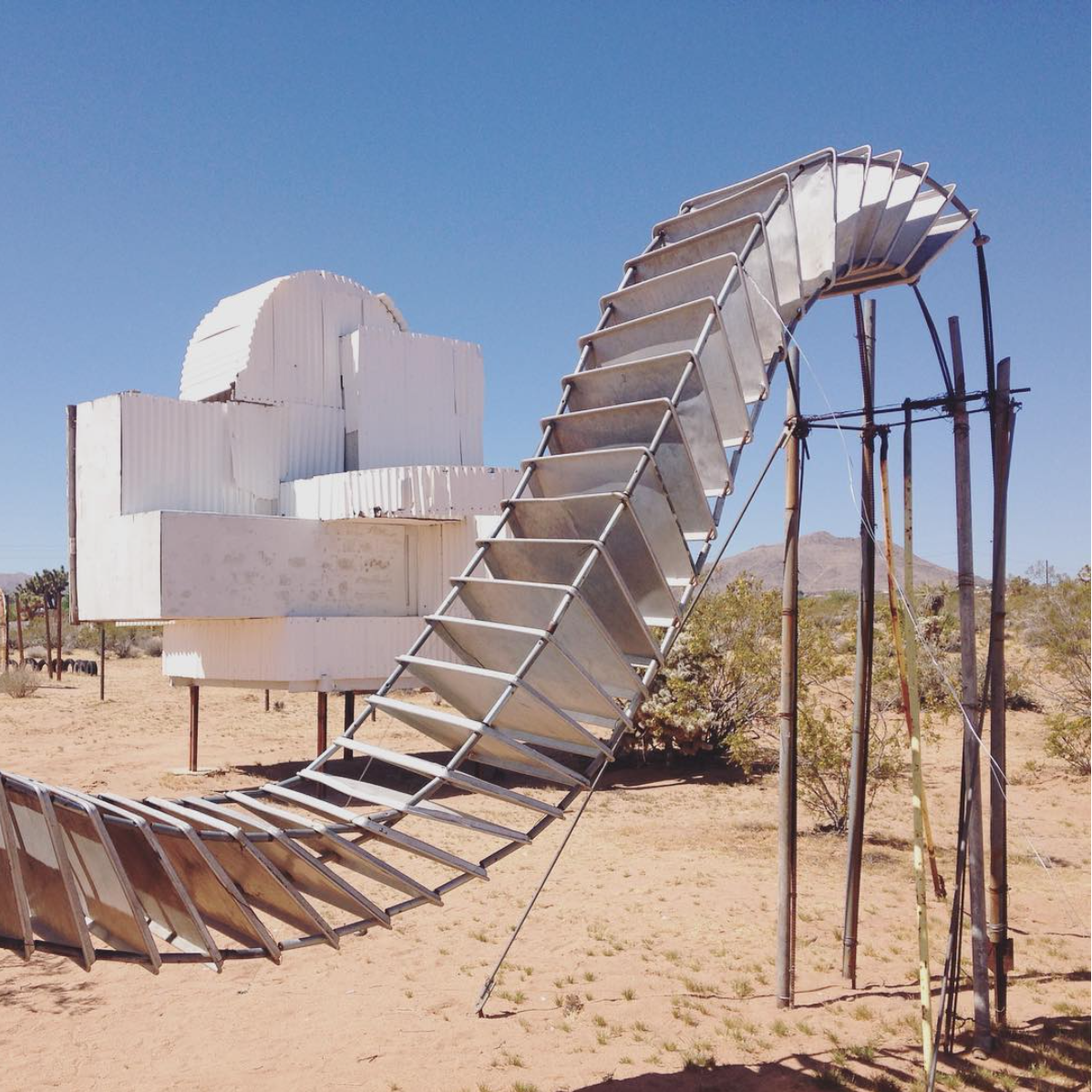Noah Purifoy Outdoor Desert Art Museum. Photograph copyright 2016 by Anna Boudinot.
Noah Purifoy once remarked, “Here in the desert, material objects are precious and people recycle everything." The art assemblages that now make up Noah Purifoy Outdoor Desert Art Museum are a testament to how everyday items can become precious.
Noah Purifoy was born in 1917 in Alabama and was a social worker and a high school shop teacher before serving in the Navy during WWII. Later he moved to California and graduated from the university that is now CalArts. The Watts Riots of 1965 affected him profoundly. Along with six other artists, Purifoy collected two tons of material from the wreckage of the riots to create an art exhibition called “66 Signs of Neon.” "We wanted to tell people that if something goes up in flames it doesn't mean its life is over," he later explained.
Discarded electronics are a recurring theme of Noah Purifoy. Photo copyright 2018 by Anna Boudinot
Purifoy dedicated his life not only to his own art, but also to bringing art to others. He was co-founder of the Watts Towers Art Center, and he was a member of the California Arts Council for eleven years. There he developed and spearheaded art programs for schools, prisons, and underserved communities. Despite his tireless work to serve the people around him and to create art that made profound social statements, he never had enough acclaim to become a wealthy man. I have no idea if this is because he was an African American artist struggling to compete in a world that was defined by Caucasian standards, but one can’t help but wonder. By the time he retired he was living off of social security alone and couldn’t afford to stay in Los Angeles. In 1989 he moved to the more affordable and more remote Joshua Tree, where he called ten acres of desert his home.
What Purifoy built on those ten acres is now called the Noah Purifoy Outdoor Desert Art Museum of Assemblage Sculpture. A short drive away from Joshua Tree National Park and the Integratron, the outdoor museum has no admission and is open every day from dawn to dusk. It is a bit off the beaten path (literally: a dirt road leads up to its entrance) and once you arrive you will feel as though you stumbled across this astonishing treasure by accident.
Assemblage by Noah Purifoy. Photo copyright 2018 by Anna Boudinot
Each of the 50-odd sculptures in the outdoor museum is made of a cornucopia of found objects that would put Marcel Duchamp to shame. Computer keyboards and monitors, musical instruments, bicycles, clothing, industrial-grade baking pans, and toilets are among the more easily recognizable items. Glass bottles embedded into a cement wall are reminiscent of the Watts Towers, and bowling balls hang suspended alongside one another like a massive version of one of those desktop toys that demonstrate kinetic energy.
What makes the sculptures even more interesting is that Purifoy completely understood that they would begin to decay in the desert elements. One sculpture consists of living room furniture resting on a wooden platform, hubcaps strung up on a wire-and-wood frame as a backdrop. The stuffing of the easy chairs is spilling out and the books are sliding off of the splintered bookcase, their pages wrinkled with water damage. It’s perhaps a commentary of the temporary nature of everything manmade versus the ancientness of the desert landscape. This makes this desert road trip even more important to embark upon: the precious objects that Noah Purifoy left behind will one day also be gone.


